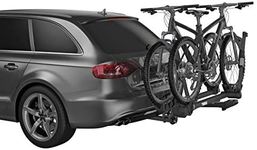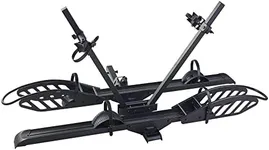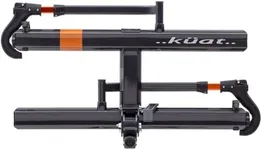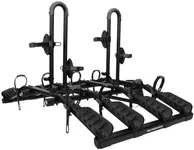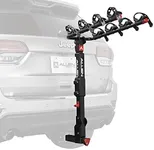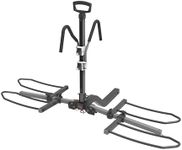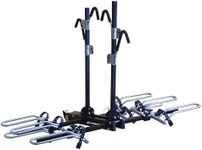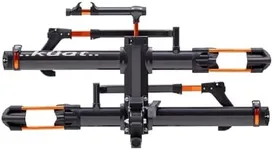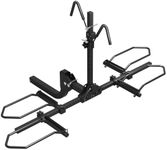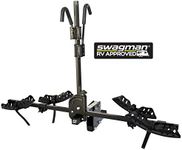Buying Guide for the Best Bike Rack For Rv Hitch
Choosing the right bike rack for your RV hitch is all about matching your travel needs with the features that will keep your bikes safe and secure on the road. Since RVs are larger and often travel longer distances, it's important to pick a rack that is sturdy, easy to use, and compatible with your RV's hitch. Think about how many bikes you want to carry, the types of bikes you own, and how often you'll be loading and unloading them. By understanding the key features, you can make sure your bikes travel safely and you have a hassle-free experience.Hitch Receiver Size CompatibilityThe hitch receiver size refers to the opening on your RV where the bike rack will be attached, most commonly 1.25-inch or 2-inch. This is important because the rack must fit securely into your RV's hitch to ensure safety and stability. If you have a 2-inch receiver, you can use racks designed for that size, which are generally sturdier and can carry more weight. For 1.25-inch receivers, you'll need a compatible rack, but these may have lower weight limits. Always check your RV's hitch size before shopping, and choose a rack that matches it exactly to avoid wobbling or unsafe fits.
Bike CapacityBike capacity tells you how many bikes the rack can hold at once. This is crucial because overloading a rack can damage both your bikes and your RV. Racks typically hold between two and four bikes, but some heavy-duty models can carry more. If you usually travel alone or as a couple, a two-bike rack may be enough. For families or group trips, look for racks with higher capacities. Always consider the number of bikes you plan to transport most often, and remember that carrying fewer bikes than the maximum is always safer than trying to squeeze on more.
Weight LimitThe weight limit is the maximum total weight the rack can safely support. This matters because bikes vary in weight, especially if you have electric bikes or mountain bikes, which are heavier than standard road bikes. Racks with higher weight limits are built for heavier bikes and more bikes at once. If you have lightweight bikes, a lower weight limit may be fine, but for e-bikes or multiple heavy bikes, look for racks with a higher weight rating. Always add up the weight of all your bikes and make sure it’s well within the rack’s limit for safe travel.
Mounting StyleMounting style refers to how the bikes are held on the rack, such as hanging (where bikes are suspended by their frames) or platform (where bikes sit on trays and are secured by the wheels or frame). Hanging racks are usually lighter and less expensive, but may not be suitable for bikes with unusual frames or full-suspension mountain bikes. Platform racks are more versatile and stable, especially for heavier or oddly-shaped bikes, but they can be bulkier. Choose a mounting style that matches your bike types and your preference for loading and unloading.
Security FeaturesSecurity features include locks for the bikes and the rack itself, which help prevent theft when you’re parked or overnighting. Some racks come with built-in locks, while others require you to buy them separately. If you often leave your bikes unattended or travel to unfamiliar places, look for racks with integrated locking systems. If security is less of a concern, you may be fine with basic racks and using your own locks. Think about your travel habits and how much peace of mind you want regarding bike security.
Ease of Installation and UseEase of installation and use covers how simple it is to attach the rack to your RV and load or unload your bikes. Some racks are designed for quick, tool-free installation and easy bike mounting, while others may require more effort or tools. If you plan to remove the rack often or want to load bikes by yourself, look for user-friendly designs with clear instructions and features like tilt or swing-away mechanisms for easy access to your RV’s rear. If you don’t mind a more permanent setup, installation complexity may be less important.
RV Approval and DurabilityNot all bike racks are rated for use on RVs, which experience more movement and vibration than regular vehicles. RV-approved racks are built to withstand these stresses and are often reinforced for extra durability. Using a non-RV-rated rack can lead to failures or even loss of your bikes. Always check that the rack is specifically approved for RV use, especially if you travel on rough roads or for long distances. Durability also means looking for racks made from strong materials like steel, with weather-resistant coatings to handle outdoor conditions.
